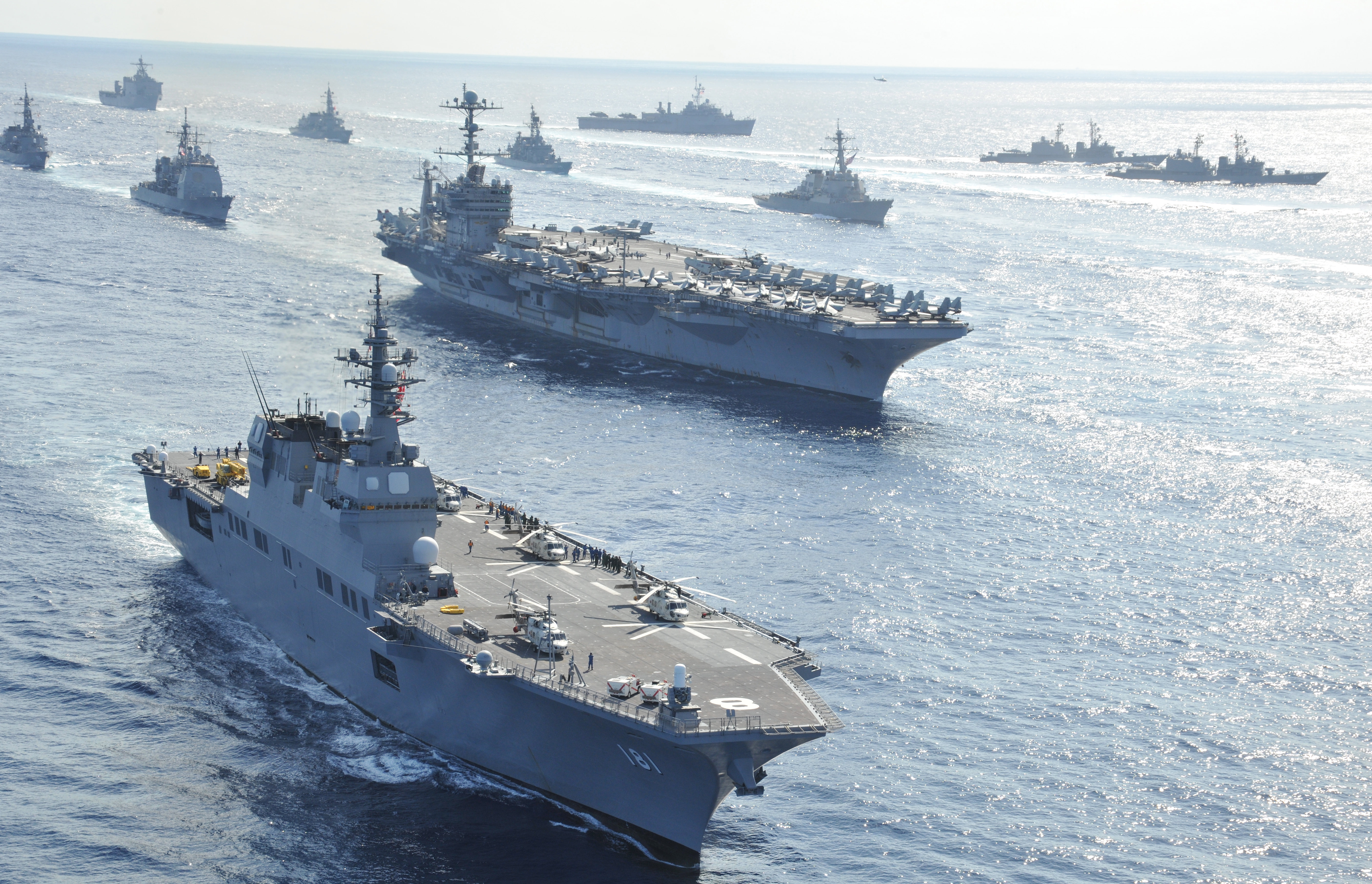The rise of China as an economic powerhouse has been matched by Beijing’s increased assertiveness in pursuing its regional and global interests, both in a diplomatic and military capacity.
Nowhere has this growing confidence been watched more closely than in Japan. Until 2011, the archipelago state had spent five decades as the largest economy in Asia. During the last century, the two states were also one another’s principal military rivals. To this day, the events of WWII remain an obstacle to Sino-Japanese relations, which has been subject to distortions by right-wing revisionists in Japan and ultra-nationalist forces in China.
While the probability of a conventional military confrontation between two of Asia’s largest economies remains low, maritime tensions between the states have heightened in recent years. Relations between China and Japan have been strained by the Senkaku/ Diaoyu islands dispute, with Xi Jinping exerting diplomatic and military pressure on Japan to counteract its claims on the island chain. This military assertiveness has taken the form of repeated incursions by Chinese aircraft into Japanese air space. Between March and December 2014, Japanese Self Defence Force (JSDF) fighters were scrambled 744 times. According to the Ministry of Defence in Tokyo, this is 32% more than the number of incursions that happened during the same period in 2013 and the most since records began in 1958.
This trend continued well into 2015 with Japan’s warplanes flying 117 sorties between July and September 2015 – up from 103 in the same period the previous year. As recently as December 2015, China conducted training exercises in the East China Sea, sending long-range Xian H-6 strategic nuclear bombers into the Miyako Strait for the first time. This channel separates the Japanese mainland from the ‘First Island Chain’ and is only a few hours flying time from Tokyo.
Under the leadership of nationalist Prime Minister Shinzo Abe, Japan has responded by transitioning to a more militarily proactive state, with Tokyo’s defence planning increasingly driven by concerns over China’s rising military superiority. This is most evident in Abe’s 2015 reform of Article 9 of the Japanese Constitution, enabling Tokyo to engage in acts of collective self-defence with key regional and treaty allies, specifically with the United States.
With these reforms, which have now become law, fears of China’s maritime assertiveness are being incorporated into a comprehensive military strategy, including the reported planning of an Anti-Access/Area Denial doctrine (A2/AD) in the East China Sea. The effect of this manoeuvre would be to close the East China Sea to Chinese military and commercial shipping, should hostilities with Beijing occur.
Securing Japan’s position in the East China Sea
In response to Beijing’s assertiveness in the East China Sea, Japan has, according to reports circulated in December 2015, begun placing Type-88 anti-ship missile batteries on over 200 islands in the region, many of which form part of the First Island Chain. Developed in the 1980s, the truck-mounted Type-88 has a range of 180 km and is the domestically-produced variant of the United States’ Navy’s Harpoon missile. This deployment has also been complimented by MIM-104 Patriot missile batteries, used to protect Tokyo during the 2013 North Korean crisis. The Abe administration has also announced that over 10,000 JSDF service personnel will be deployed to the islands.
Anti-Access/Area Denial (A2/AD) is designed to deny maritime spaces to superior naval forces via the asymmetric use of land-based and sea-launched missiles, thereby providing strategic depth to a defensive force. The islands where Japan is currently in the process of deploying forces constitute part of the First Island Chain. This line of small islands 1,400 km (870 miles) in length stretches from Kamchatka in the north Pacific towards Taiwan and South East Asia, forming a natural maritime barrier between Mainland China and the rest of the Pacific. This strategic fact is not lost on defence planners in Tokyo.
The move by Japan seeks to turn the tables on China as a rising naval power. Under current conditions, vessels from the People’s Liberation Army Navy (PLAN) would have to traverse the East China Sea and enter the Pacific under the knowledge that Japanese missile batteries are situated within the First Island Chain. In the event of a Sino-Japanese conflict, China would not be able to enter the East China Sea without risking significant losses of ships, aircraft and personnel. Thus in effect, this move by Japan is denying Beijing the ability to operate militarily in disputed waters relatively close to the Chinese mainland.
The Japanese Self Defence Forces are experienced players in the field of maritime and homeland defence. Throughout the Cold War, Japan was faced with the very real prospect of the Soviet Pacific Fleets launching an amphibious assault on Hokkaido, the northernmost of the home islands. Defence planners in Tokyo sought to counter superior Soviet maritime power with a similar strategy of overlapping defences based on long-range anti-air and anti-ship missiles. We are now seeing a substantial transfer of equipment and attention from the North Pacific to the East China Sea with the PLAN’s East Sea Fleet rapidly replacing Russia’s Pacific squadron as the principal source of concern.
Through the implementation of this doctrine in the East China Sea, Japan now joins a growing list of Asian nations who have developed their own A2/AD strategy in maritime spaces. The most notable of these is China itself, whose eyes remain firmly fixed on the role of the US 7th Fleet and the US Pacific Command.
China’s ambitions for the First Island chains
In 1996, the Clinton Administration reacted to Chinese ballistic-missile tests carried out near Taiwan by sending the USS Independence (CV-62) and USS Nimitz (CVN-68) carrier strike groups into the Taiwan Strait, humiliating Beijing in a dramatic show of force just a few miles off China’s coast. The presence of such a large military force, highlighting the United States’ technological dominance, has not been forgotten in Beijing.
Since 2002, China’s own A2/AD strategy has been largely built around the possibility of a repeat of this episode, ensuring that, should US Navy carrier battle groups appear off the coast of China, perhaps with JSDF support, they would risk being met by waves of DF-21 carrier killer missiles as they approached the First Island Chain. It was no coincidence that these weapons took pride of place during the 2015 Victory Day Parade in Beijing. The aim of China’s A2/AD doctrine is greater in scope than the one currently being developed by Japan. Beijing and the PLA’s strategy during wartime is to seal off the Yellow Sea, South China Sea and East China Sea inside an arc running along the entire First Island Chain from the Aleutians in the north to Indonesia in the south. According to reports by the RAND Corporation, China will be well on its way to having the means to achieve this policy by 2020, ensuring that hostile warships cannot reach its coastline.
From the perspective of Beijing, the People’s Republic of China is a victim of its geographical location, being faced with a strategic position that, in the worst-case scenario, leaves it vulnerable to the intentions of multiple states. China has one of the largest land borders in the world with over 22,117 kilometres in length, taking in the likes of India, Afghanistan and the Central Asian republics. Meanwhile, its maritime access to South East Asia and the Pacific is, to Beijing’s mind, impeded by the presence of the United States, Japan and Taiwan. The latter of these is still considered a rogue province and a potential target militarily should Taipei declare independence.
With this in mind, Beijing is seeking to counter US military strength in the region by securing the First Island Chain. In the meantime, Japan is in the process of disrupting this strategy via its policy of strengthening the JSDF role in the East China Sea. The United States, the next US president will face a security situation in which two of Asia’s largest economies are hedging against each other militarily.




